So, I had some new little ideas in regards to the zero offset bank design. This time, I tried to make something in the forg/knife concept. And to be true, it actually works out pretty damn well.
Here you can see two pics of how the Pistons and the rods are arranged:
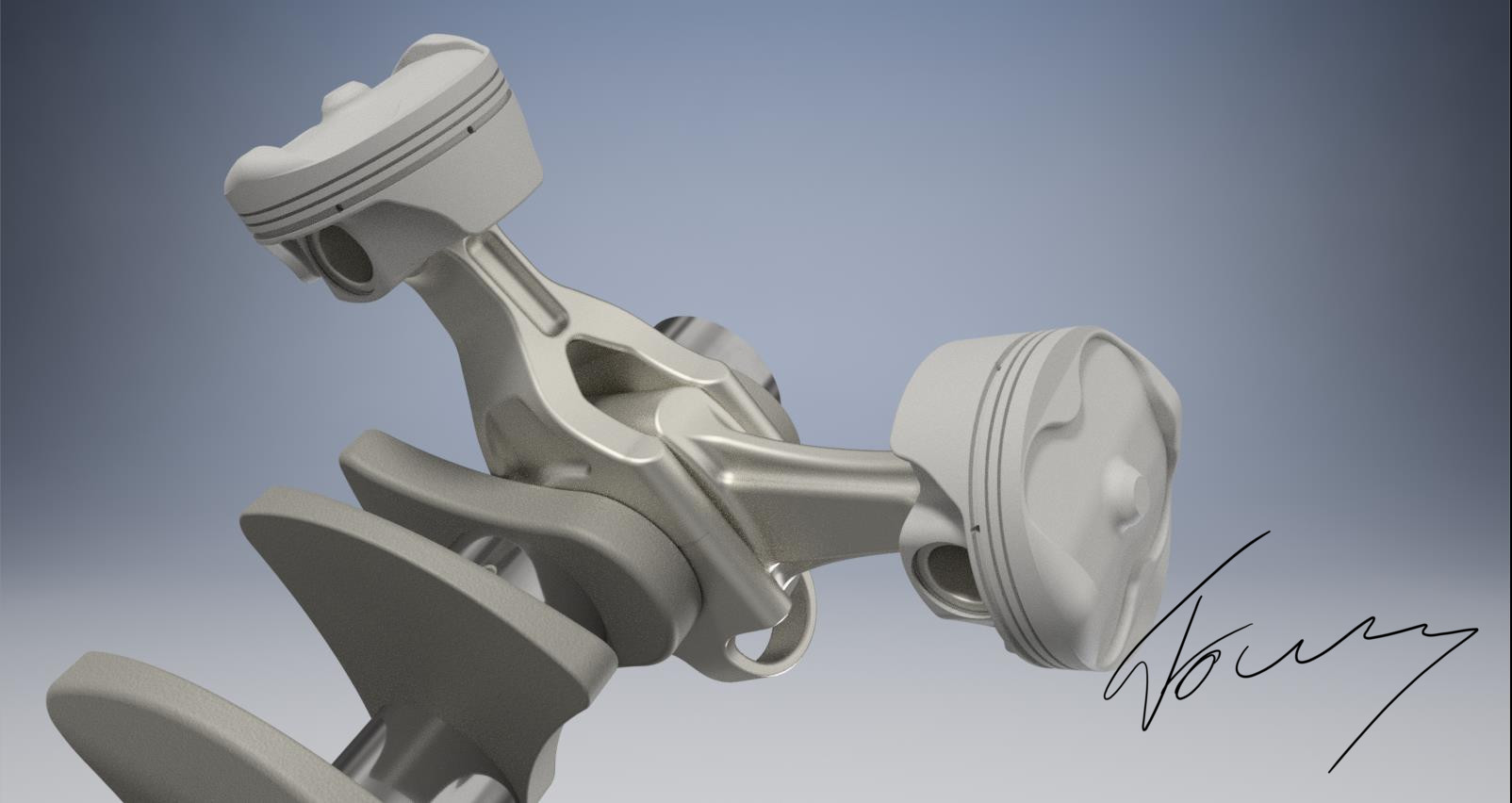
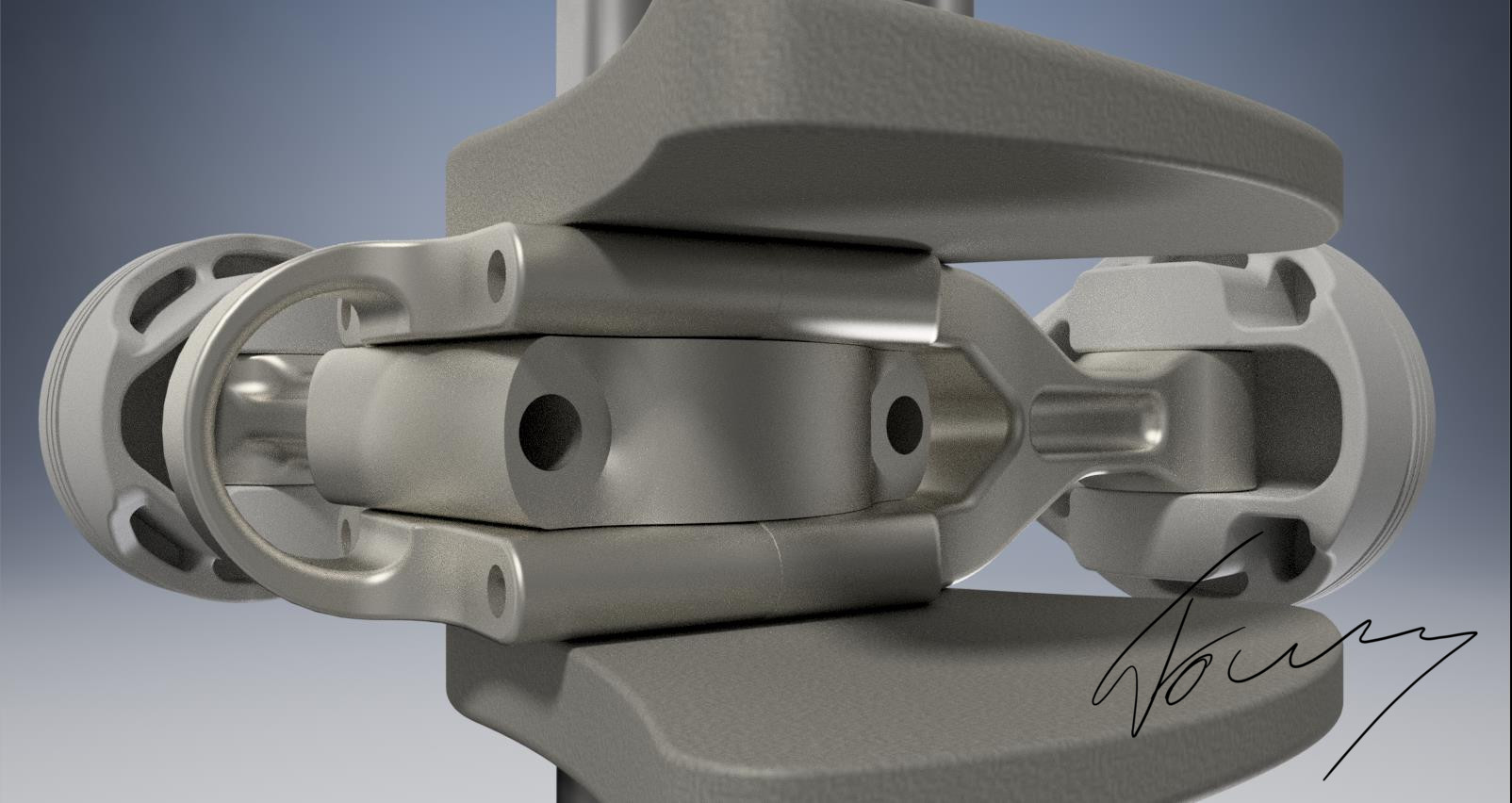
As you can see, the rods don't look very familiar. This is due to the different optimization of the single rods to improve stability and stiffness. The Rodcap of the forg-styled rod isn't seperated! The arc at the bottom allows to increase stiffness in the area of the bearing. Overall, the only difference between these two rods is that the forg-styled weighs approx. 30-40% more, so we have to compensate that a bit.
But because of the low center of gravity of the rod, this increased force is mainly radial force on the crankpin. Thank's to the positioning at the ends and the single rod in the center, this force also gets evenly distributed.
Regaring the bearings, the concept shown here uses one bearing for the single rod and two thinner ones for the forg-styled rod. The tolerances in between the inner faces of the forg-rod and the outer faces of the single rod can be made very thin, and thanks to the huge amount of oil going through this passage, These 2 contact points also could have some sort of dampening effect to the rods, which is - again - improving the pressure distribution at the outer bearings.
Now about the lubrication system. Of course, only having two bores down from both main bearings to the center points of the two halves of the crankpin isn't enough, as we have a total of 3 bearings and the oil-feeding bores would come out right between them, which is the worst position you could get for lubrication access

So, my idea was to make the traditional two bores right into the center point of the whole crankpin. Then, another two smaller bores on the center points of the forg-rod bearings are made. These bore Points could also be set a bit more outwards than directly in the center to further enhance lubrication at the "critical" outer points of the forg-rod bearings.
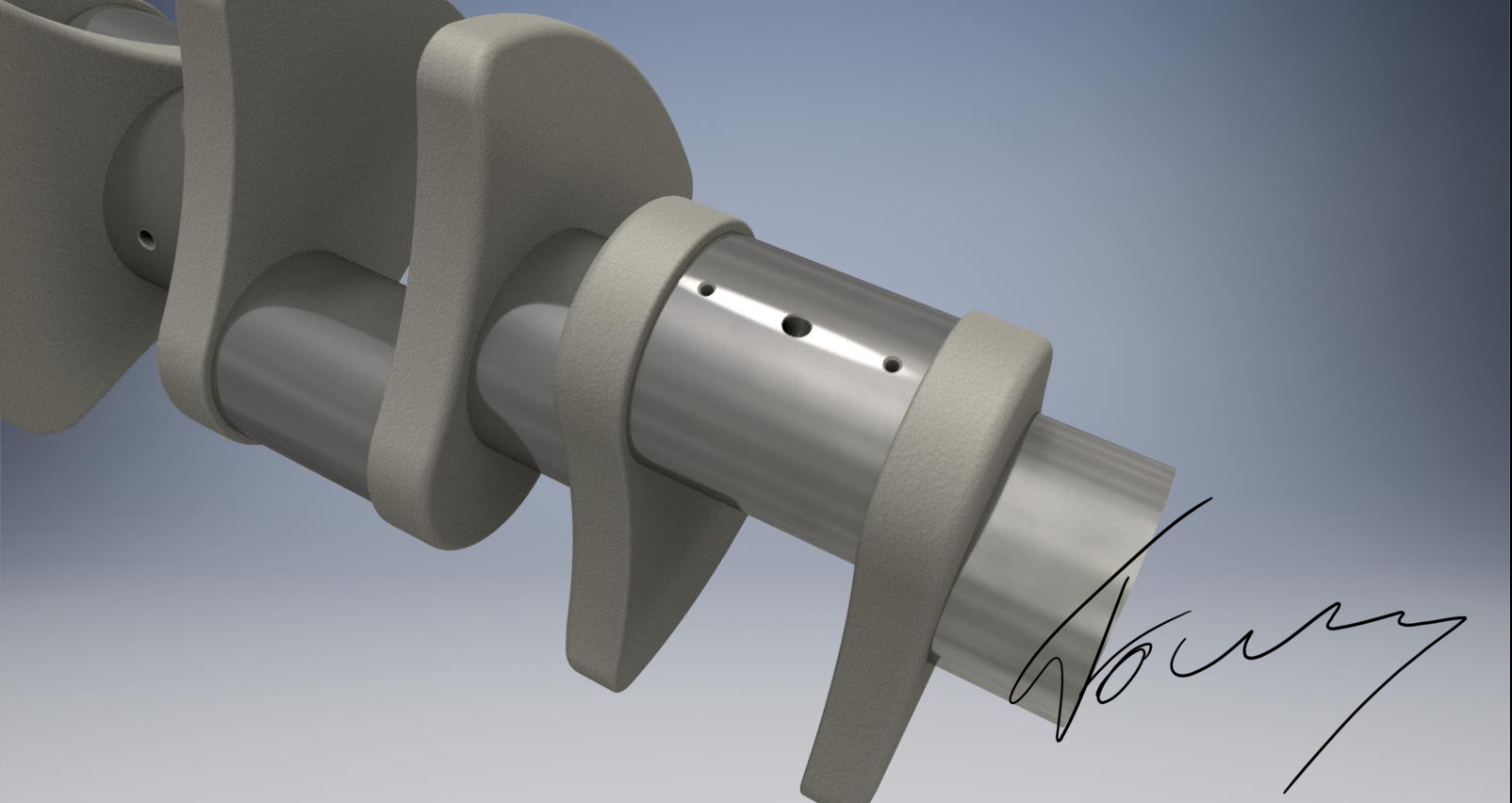
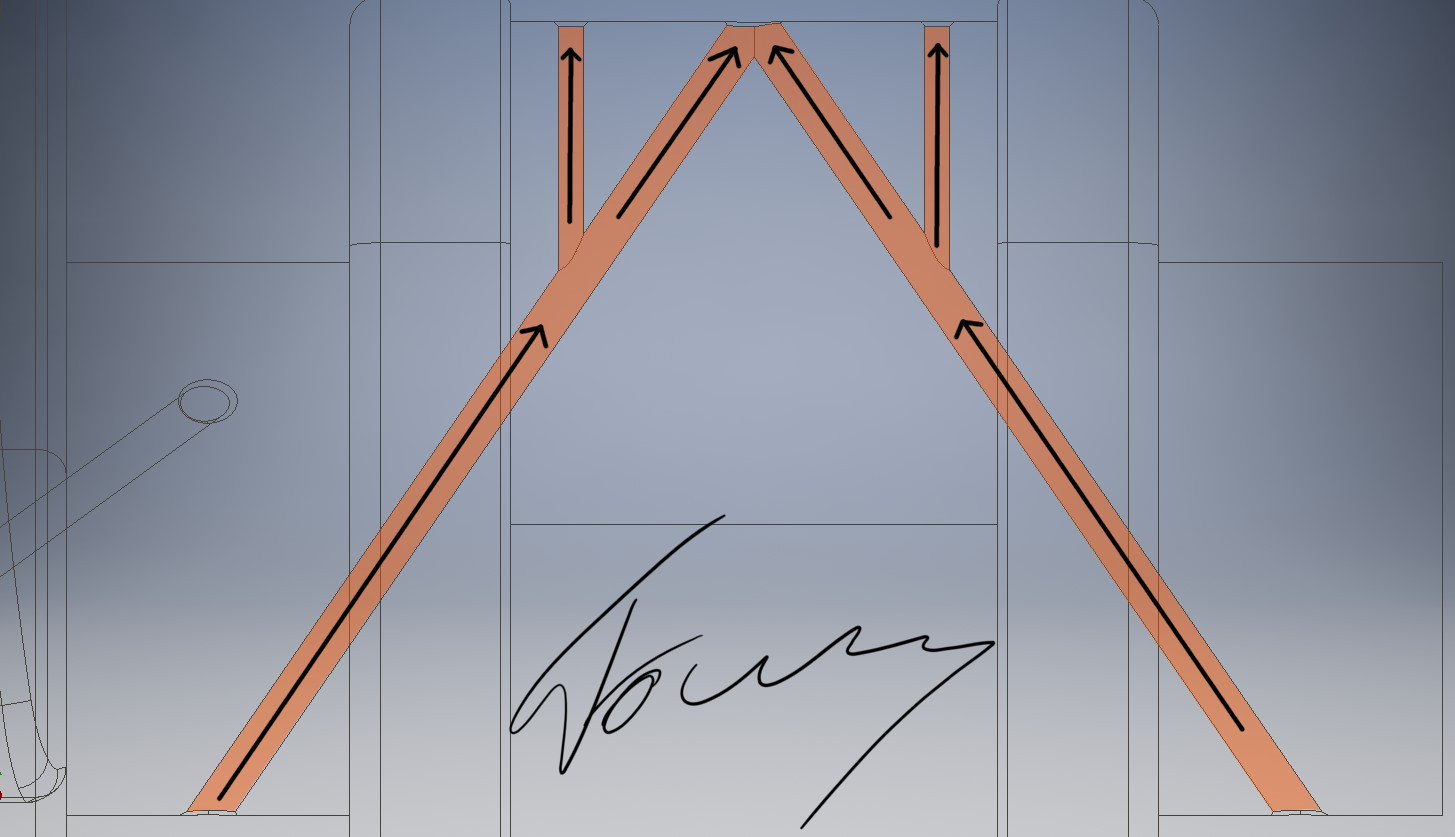
And I also have two screenshots of a FEM-simulation (38MPa cylinder pressure). While I did not took a look at the dynamics, the results look very promising! The stability on the seperation area is very good (while it still has potential to be further improved). What impressed me the most was the low amount of movement in this speration area. When looking at the screenshot with the amount of movement on the Y-axis, you can see there is no critical or important movement in the seperation area!
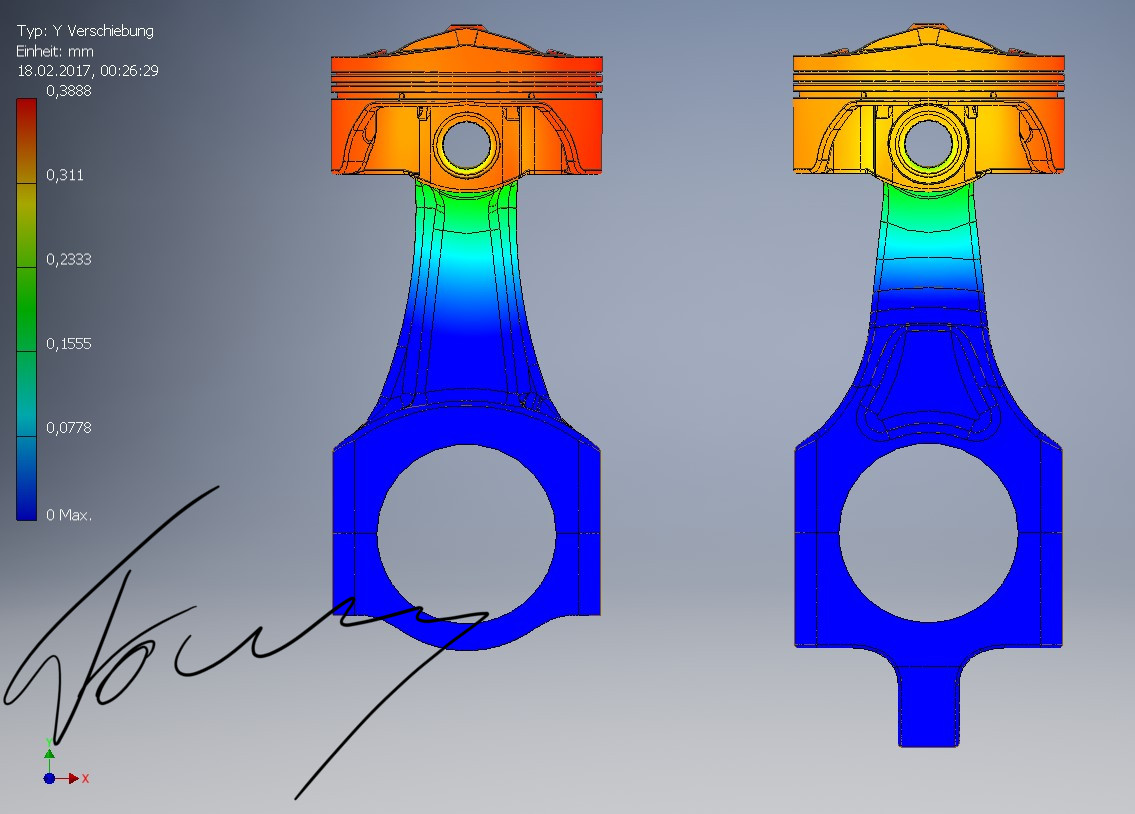

So, to conclude: After being critical, i do really think that the forg-styled rod could be a thing. The problems that come with it are manageable. Maybe you can see more in the pictures






